Ágrip úr sögu Hvalasafnsins: 1998
Þann 17. júní Árið 1998 flutti safnið í um 200 m2 rými á efri hæð “Verbúðanna” við höfnina undir nafninu “Hvalamiðstöðin á Húsavík”. Gestafjöldi óx jafnt og þétt og samhliða því þörfin fyrir stærra húsnæði sem hentaði starfsemi safnsins betur.
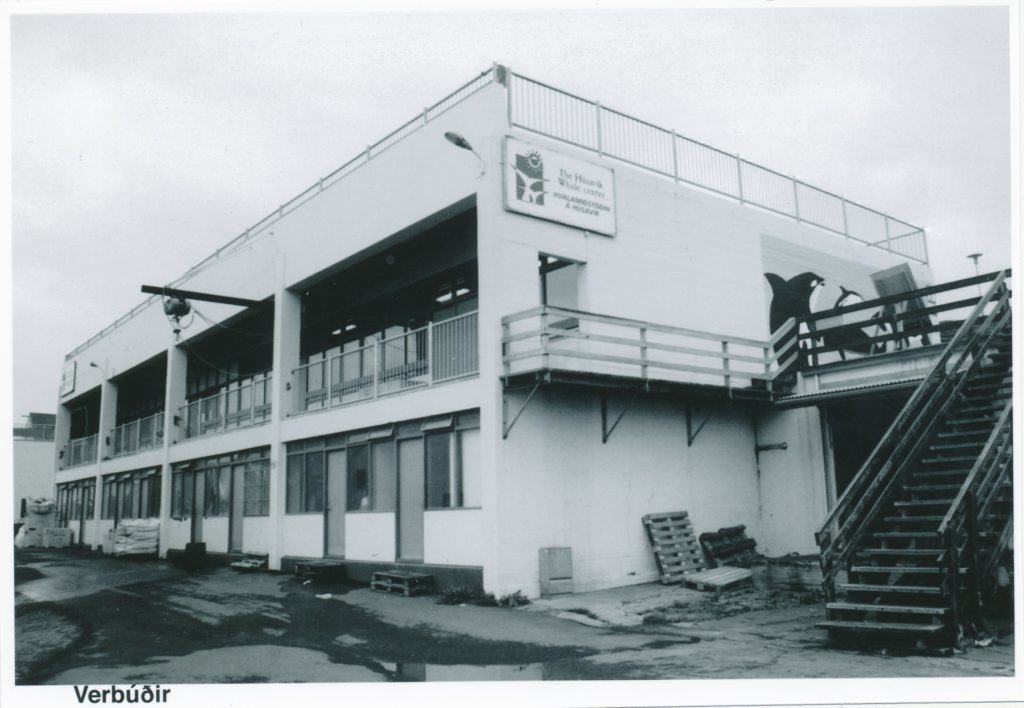
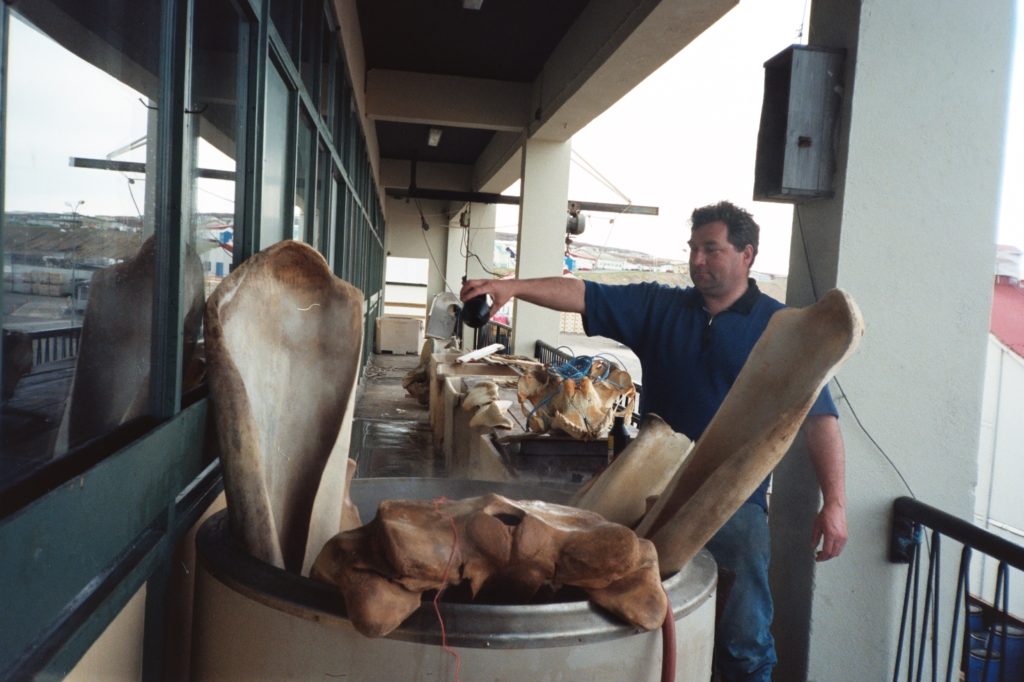
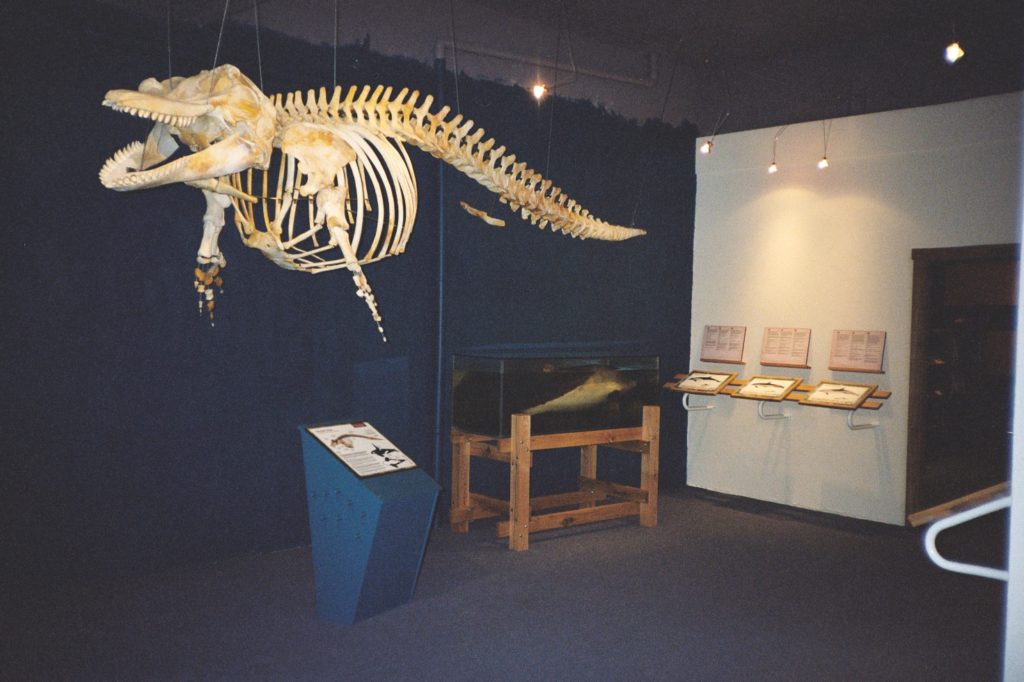
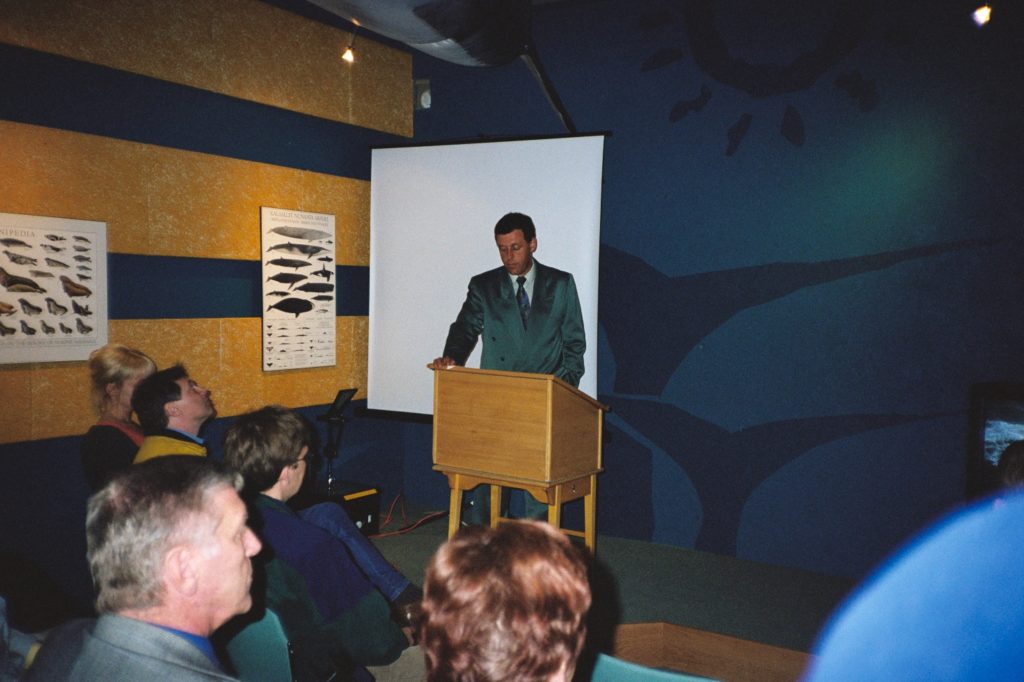
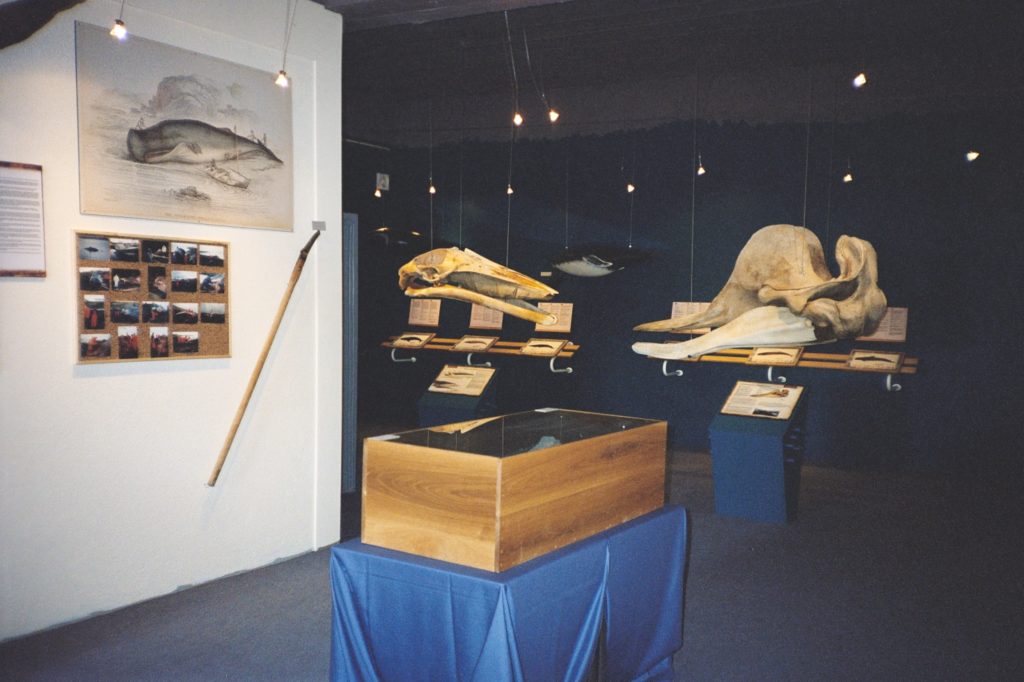
Ágrip úr sögu Hvalasafnsins: 1997
Forveri Hvalasafnsins á Húsavík var lítil sýning í sal félagsheimilisins á efri hæð Hótels Húsavíkur sem opnaði árið 1997. Á þessum tíma voru áætlaðar hvalaskoðunarferðir í boði þriðja árið í röð frá Húsavík og fékk hótelstjóri staðarhótelsins Páll Þór Jónsson þá hugmynd að opna sýningu á hótelinu tileinkaða hvölum. Ásbjörn Björgvinsson var fenginn til að leiða verkið og flutti hann norður ásamt fjölskyldu sinni í janúar 1997.
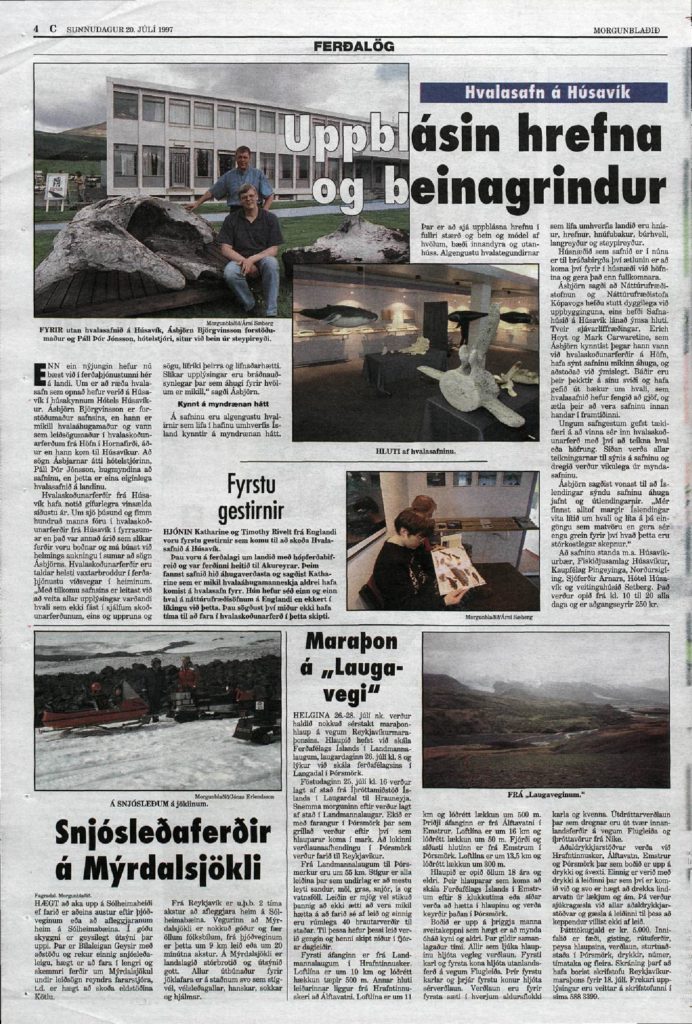
Ásbjörn fór til Englands á Breska náttúrusögusafnið á fund Richard Sabin sýningarstjóra safnsins í þeim tilgangi að læra að verka af hvalbeinunum en þar er að finna stærsta beinagrindasafn heims. Richard Sabin hefur verið í tengslum við safnið og Húsavík allar götur síðan. Hann stjórnaði til að mynda aðgerðum við uppgröft hvalbeina á Keflavík á Ströndum árið 2001 en þeim fundi er gerð betur skil í einu af sýningarrýmum safnsins.
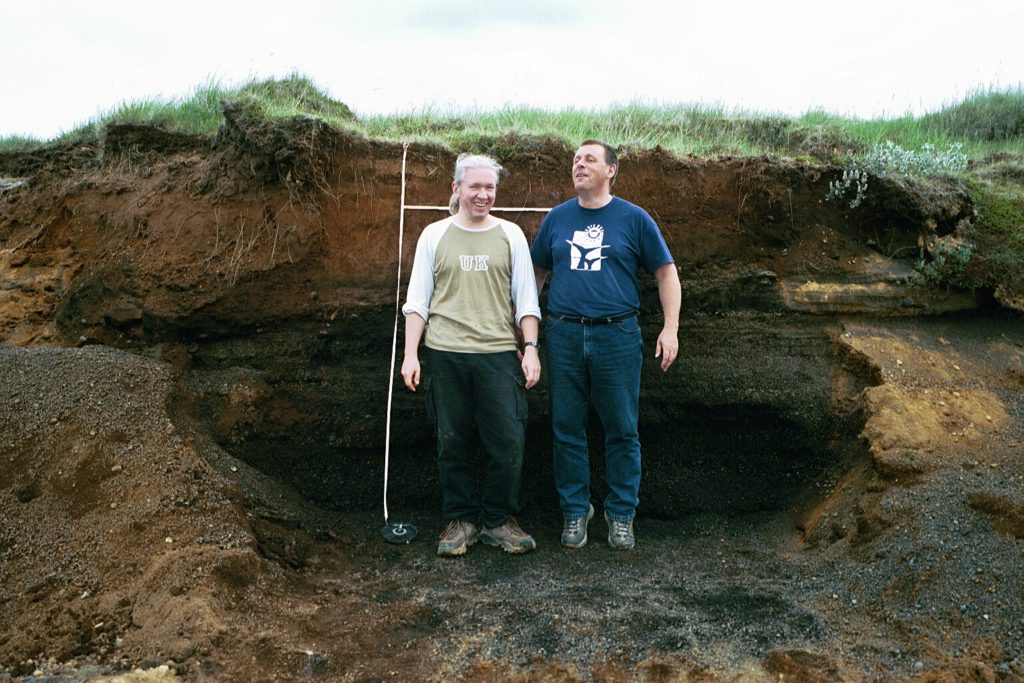
Richard
Hvalir í Skjálfandaflóa: Hnýðingur
Þá er komið að því að kynna til leiks hnýðinga, en þeir eru ansi algeng sjón í Skjálfandaflóa.
Latneskt
heiti: Lagenorhynchus albirostris
Enskt heiti: White-beaked
dolphin
Íslenskt heiti: Hnýðingur
Meðallíftími: 30 – 40 ár
Fæðuval: Fiskar, krabbadýr og kolkrabbar
Stærð: u.þ.b. 3 metrar
Þyngd: 180-350 kg
Hnýðingar eru landlægir í Norður Atlandshafi. Þá má eingöngu finna frá norðausturströnd Bandaríkjanna og norðvestan við Evrópu upp að Spitsbergen á Svalbarða. Hnýðingar eru mjög félagssinnaðir. Þeir lifa í hópum sem telja allt frá fimm til 50, en við sérstakar aðstæður geta hóparnir orðið allt frá 100 upp í 1000 hnýðingar. Stundum kynjaskiptast hóparnir.
Hnýðingar geta synt mjög hratt eða upp í 45 km/klst. Þegar þeir ferðast
á sem mestum hraða stökkva þeir stundum meðfram því sem þeir synda.
Hnýðingar verða kynþroska um 7 ára gamlir. Fengitími er frá maí og fram í September.
Meðgöngutími er 11 mánuðir og þegar kálfarnir fæðast eru þeir 1 meter að lengd
og 40 kg að þyngd.
Ungir hnýðingar elska að leika sér í kjölsogi báta og stærri hvala. Þeim
finnst það svo gaman að stundum áreita þeir hvali í þeim tilgangi að þeir syndi
hraðar þanig að kjölsog skapist.
Hver og einn hnýðingar hefur sértækt tónsvið sem aðrir hnýðingar geta sundurgreint gegnum flaut og smelli sem þeir gefa frá sér.
Hnýðinga má finna í Skjálfandaflóa allt árið. Yfir sumarið er stundum hægt að sjá móður og afkvæmi saman.
Gestafjöldi í júlí fram úr væntingum
Gestir Hvalasafnsins á Húsavík í júlí 2019 voru tæpir 10 þúsund talsins. Það er fjölgun upp á rúm 11% frá árinu 2018 og ívið fleiri en heimsóttu safnið í júlí 2017. Þjóðverjar og Bandaríkjamenn eru áfram fjölmennir sem hlutfall af heildargestafjölda en þá hefur einnig verið góð aðsókn frá mörgum Mið-Evrópuríkjum, ekki síst Frakklandi.
Þessi fjölgun gesta á háannatímanum verður að teljast afar ánægjuleg og jafnvel óvænt tíðindi fyrir Hvalasafnið. Í kjölfar tíðinda um fall WOW Air síðastliðið vor þótti líklegt að mikil fækkun yrði á komum ferðamanna til landsins og myndi það koma illilega niður á landsbyggðinni. Það er því afar gleðilegt að upplifa vísi af því að ferðamönnum fækki ekki, enda þótt ekki sé hægt að heimfæra gestafjölda Hvalasafnsins yfir á heildarfjölda ferðamanna sem heimsækja Norðurland.
Ný listaverk utan á Hvalasafninu
Hvalasafnið á Húsavík fékk heldur betur upplyftingu í dag þegar að listaverk eftir spænsku listakonuna Renötu Ortega voru sett upp utan á suðurhlið hússins. Það var Trésmiðjan Val ehf. sem sá um útfærslu og uppsetningu á listaverkunum. Að sögn Heiðars Hrafns Halldórssonar verkefnisstjóra safnsins kom hugmyndin um listaverkin upp í tengslum við miklar endurbætur á húsinu. Starfsfólki safnsins hafi langað til þess að útbúa ákveðið tilbrigði af hinum auðkennandi hvalamálverkum sem einkenndu ytra útlit safnsins á árunum 2001-2018. Listaverkin hafi því þótt kærkomin þar sem þau hylja gamla stálglugga sem voru farnir að láta verulega á sjá.
Heiðar sem einnig situr í Framkvæmda- og skipulagsráði Norðurþings segist vona að uppátækið hvetji fleiri til að gera slíkt hið sama. Listaverk sem þessi séu hin mesta húsprýði og lífgi upp á tilveruna.
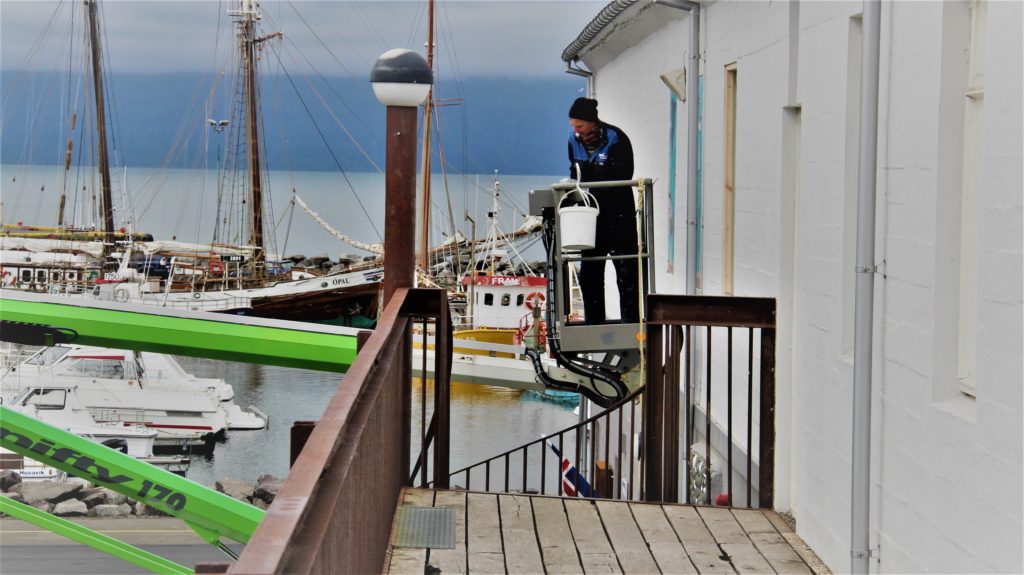
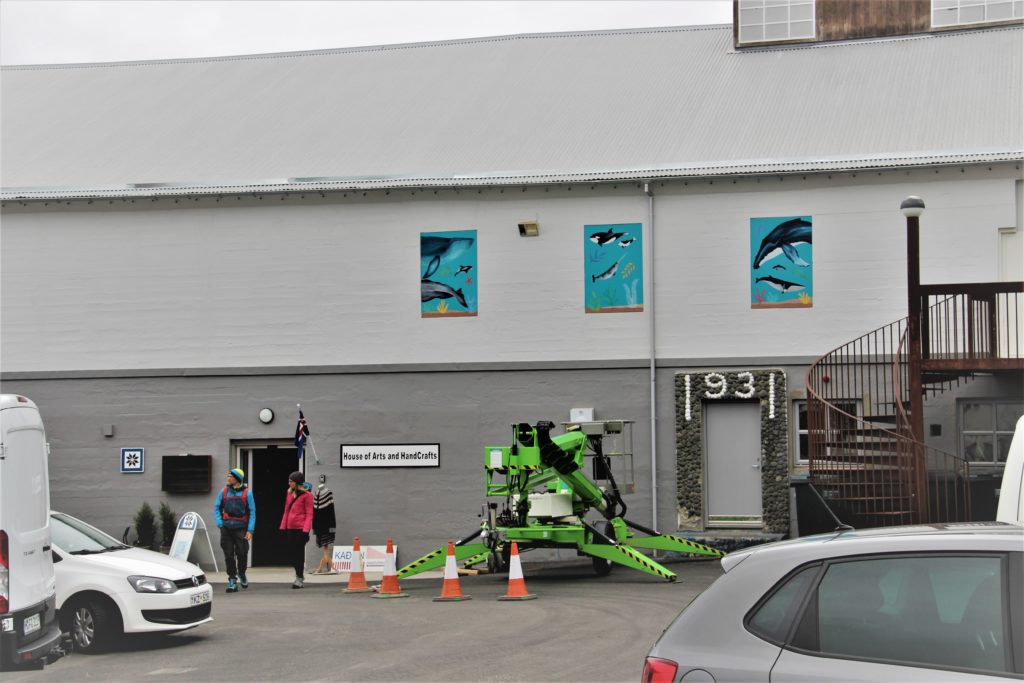
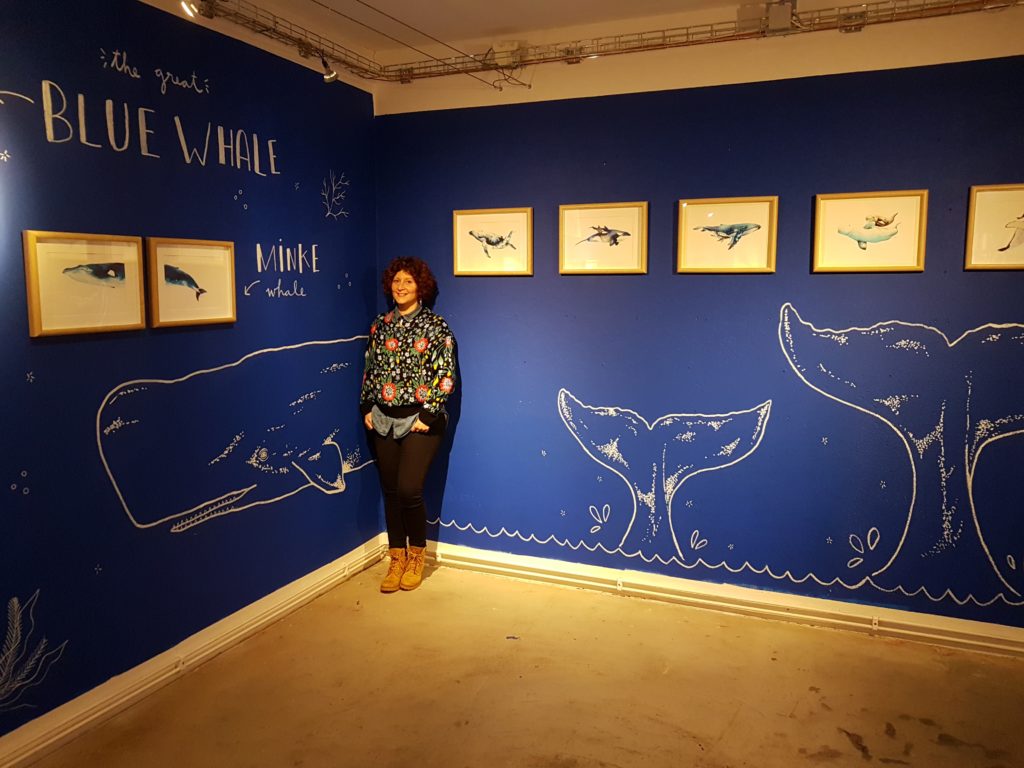
Tímabilið hafið hjá Húsavík Adventures
Vorið nálgast æ meir enda þótt enn sé snjór á Húsavík. Í fær fengust fréttir af því að fyrstu lundarnir væru mættir í Grímsey og ætti því ekki að vera langt þar til að Lundey taki á móti sínum árlegu sumargestum í þeim tilgangi að ala upp ungviði sín.
Í dag hóf Húsavík Adventures sitt hvalaskoðunartímabil og hafa þá þrjú fyrirtæki hafið starfsemi sína fyrir árið 2019. Þetta er fimmta vertíðin hjá RIB-hvalaskoðunarfyrirtækinu sem var stofnað um mitt sumar 2015. Að þessu tilefni veitti Eva Björk Káradóttir forstöðumaður Hvalasafnsins á Húsavík Ármanni Erni Gunnlaugssyni framkvæmdastjóra Húsavík Adventures blómvönd og teikningu eftir spænsku listakonuna Renu Ortega.